Willow, Poplar, Aspen – Family Salicaceae
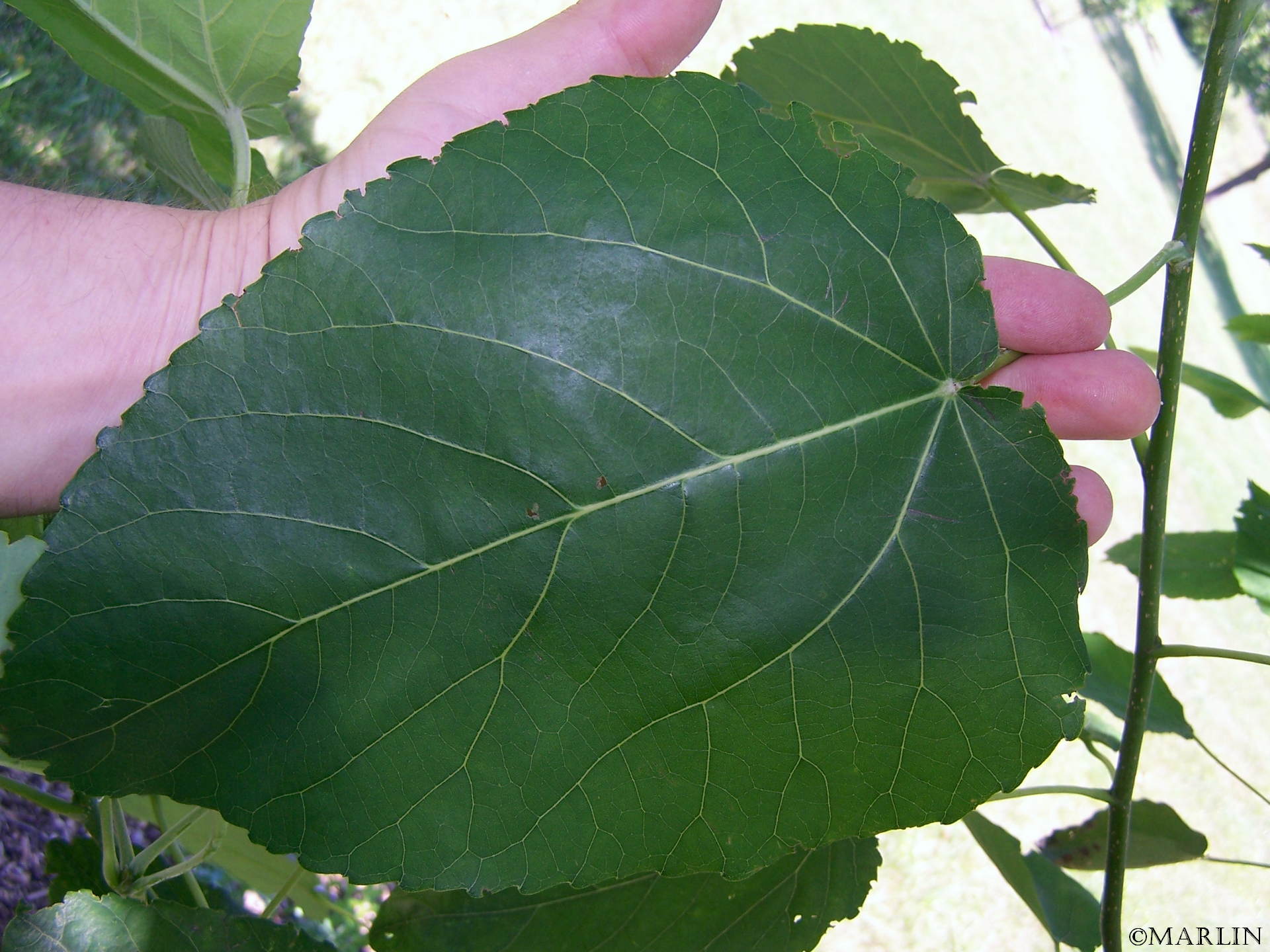
Archetypal leaflet for Populus genus; Swamp Cottonwood Populus heterophylla
There are only two genera in this family, Salix (willows), with about 300 species, and Populus (poplars), with barely 40 species. Salicaceae are found throughout the temperate parts of the world, with the majority of species occurring in the north; both willows and poplars have a strong affinity for water, and are commonly found near ponds and along watercourses.
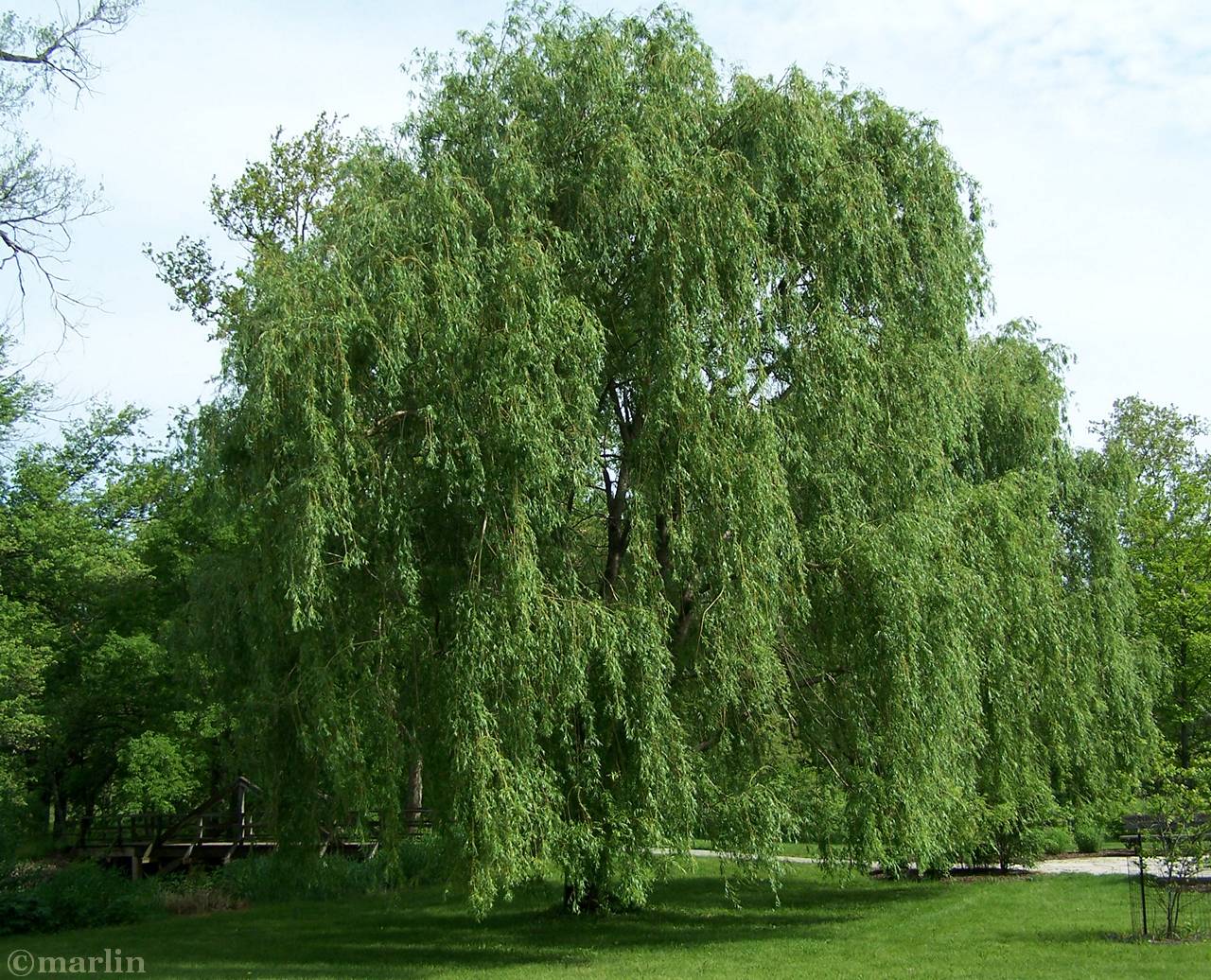 Golden Weeping Willow – Salix alba ‘Tristis’
Golden Weeping Willow – Salix alba ‘Tristis’
Golden weeping willow is a fast-growing, massive tree reaching up to 80 feet in height. Although main branches grow upward, the secondary ones grow straight down, creating the graceful weeping effect for which it is renowned. The trunk is brown with a distinctly corky bark. The pendant stems are yellow green. The narrow, deciduous leaves are pointed and green to yellow-green above, pale below. They turn yellow in the fall.
Often found growing wild along streams and watercourses, the golden weeping willow has characteristics that might have one regretting a decision to use them in home landscapes. Although willows in general grow easily in most moist soils, they require watering during periods of drought, lest they lose their leaves in copious quantities. The brittle wood is subject to windthrow and breakage, and the tree sheds its woody parts regularly, creating a never-ending litter problem.
Willow bark was steeped as tea by native Americans, and the young twigs and bark chewed to relieve headaches. It was later found the active ingredient was salicylic acid, the basis of today’s aspirin. The chemical name for aspirin comes from the willow family name.
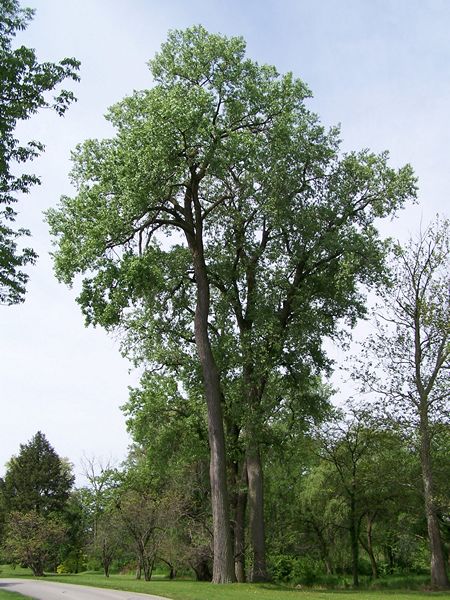
These huge cottonwoods at The Morton Arboretum are about 120 feet tall, age unknown.
One supposes they were here when Joy Morton began his museum of woody plants back in the early 1920s.
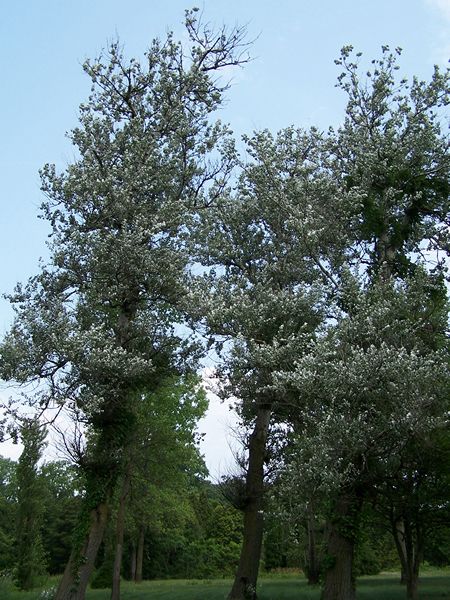
White Poplars (above) are native to Europe, Asia, and North Africa; they were introduced to North America during colonial times. They grow rapidly and spread readily by root sprouts – so readily they often become undesirable as weeds. Along with Quaking Aspen, white poplar belongs to a group of poplars with smooth barks and coarsely serrate leaves.
If you’re ever lucky enough to se a few of these trees from a distance on a windy, sunny day, you’ll not soon forget the sight. It’s difficult to describe the almost eerie pale grean-blue of the leaflet undersides shimmering in the breeze. The white poplars above were photographed at The Morton Arboretum, on the west side near the river. They are every bit of 80 feet tall and have 2-foot diameter trunks.
Poplars have wind-pollinated catkins and leaves whose broad blades have long petioles which may be flattened at one end. Their shoots bear terminal buds, and all their buds have overlapping scales. Hybrids grow more vigorously and provide better timber than their parents. Dark green, glossy poplar leaves toss in the slightest breeze, revealing silvery-white undersides.
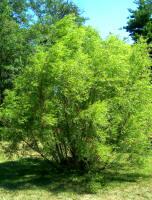 Black Willow Salix nigra |
 Eastern Cottonwood Tree Populus deltoides |
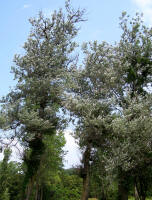 White Poplar Tree Populus alba |
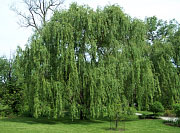 Golden Weeping Willow Salix alba ‘Tristis’ |
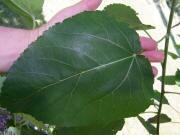 Populus heterophylla Swamp Cottonwood |
Crack Willow Salix fragilis |
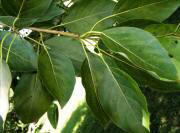 Populus balsamifera Balsam Poplar |

